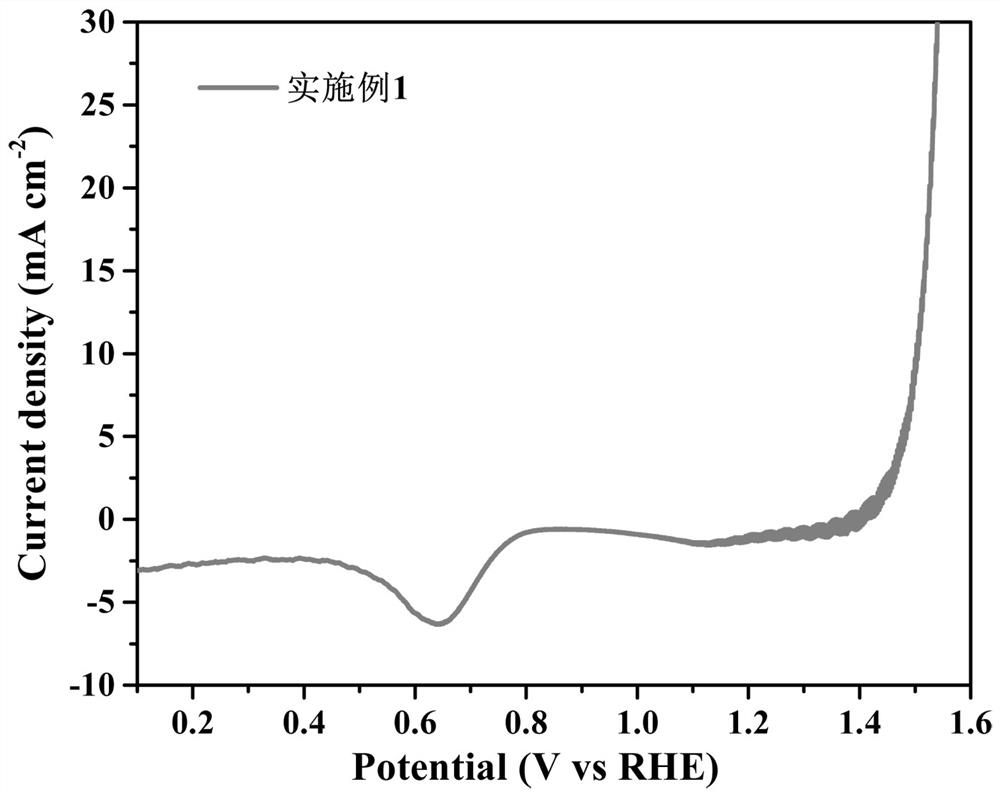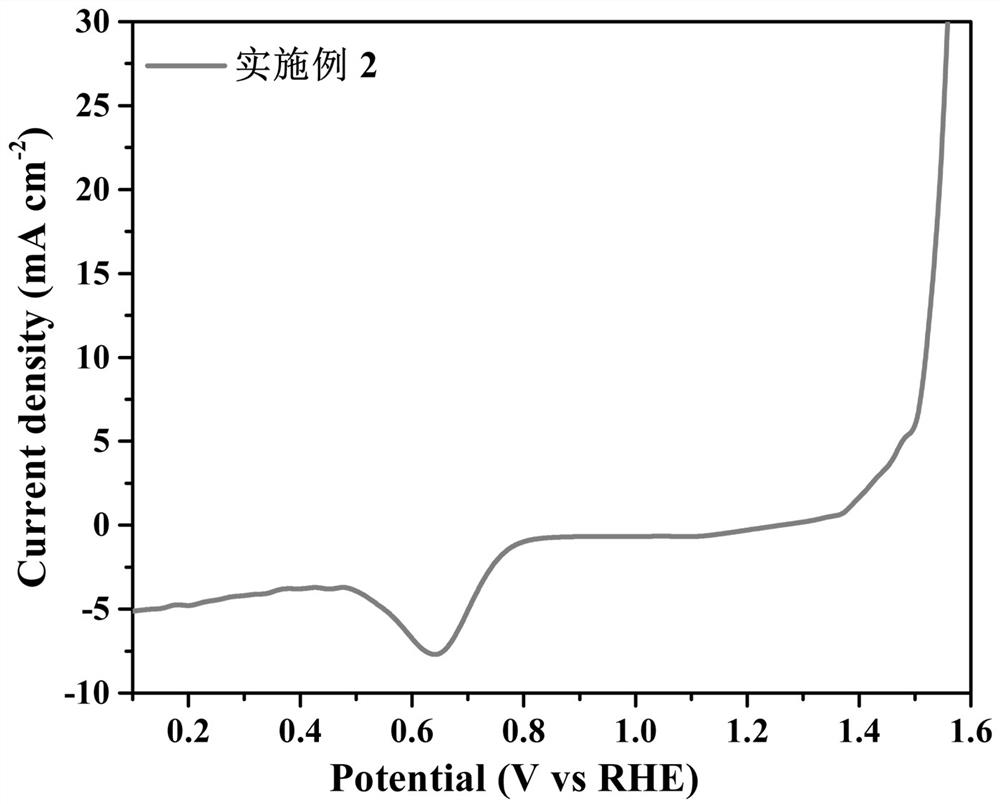A kind of preparation method of bifunctional molybdenum doped cobalt sulfide/nitrogen carbon array electrode
An array electrode, cobalt sulfide technology, applied in battery electrodes, fuel cell-type half-cells and primary battery-type half-cells, circuits, etc., can solve problems such as high cost and commercial application limitations of earth reserves
- Summary
- Abstract
- Description
- Claims
- Application Information
AI Technical Summary
Problems solved by technology
Method used
Image
Examples
Embodiment 1
[0025] the CoCl 2 ∙6H 2 O and urea were dissolved in 40 mL of deionized water at room temperature with CoCl 2 The concentration of carbon dioxide was 0.15 M, and the mass fraction of urea was 6.25 wt.%. After immersing the hydrophilic carbon paper in the solution, the reaction was kept at 90 °C for 2 h. After cooling to room temperature naturally, the carbon paper was taken out and rinsed with deionized water. Three times, dry and set aside. Soak the carbon paper on which the basic cobalt salt array was grown above in 50 mL of Tris base with a concentration of 0.01 M and pH 8.5, add 0.01 g of dopamine, stir at room temperature for 24 h, rinse the sample three times with deionized water, and then dry it. . Dissolve molybdenum chloride in ethanol solution, stir to dissolve, and obtain 400 mM molybdenum chloride ethanol solution. The carbon paper on which the basic cobalt salt array@PDA array was grown was soaked in the molybdenum chloride solution for about 1 min at room tem...
Embodiment 2
[0028] the CoCl 2 ∙6H 2 O and urea were dissolved in 40 mL of deionized water at room temperature with CoCl 2 The concentration of carbon dioxide was 0.15 M, and the mass fraction of urea was 6.25 wt.%. After immersing the hydrophilic carbon paper in the solution, the reaction was kept at 90 °C for 2 h. After cooling to room temperature naturally, the carbon paper was taken out and rinsed with deionized water. Three times, dry and set aside. The carbon paper on which the basic cobalt salt array was grown was immersed in 50 mL of Tris base with a concentration of 0.01 M and pH 8.5, 0.02 g of dopamine was added, stirred at room temperature for 24 h, and the sample was rinsed three times with deionized water. dry. Dissolve molybdenum chloride in ethanol solution, stir to dissolve, and obtain 400 mM molybdenum chloride ethanol solution. The carbon paper on which the basic cobalt salt array@PDA array was grown was soaked in the molybdenum chloride solution for about 1 min at ro...
Embodiment 3
[0032] the CoCl 2 ∙6H 2 O and urea were dissolved in 40 mL of deionized water at room temperature with CoCl 2 The concentration of carbon dioxide was 0.15 M, and the mass fraction of urea was 6.25 wt.%. After immersing the hydrophilic carbon paper in the solution, the reaction was kept at 90 °C for 2 h. After cooling to room temperature naturally, the carbon paper was taken out and rinsed with deionized water. Three times, dry and set aside. The carbon paper on which the basic cobalt salt array was grown was placed in the air to react at 400° C. for 0.5 h to obtain a carbon paper substrate on which the cobalt oxide array was grown, which was naturally cooled and taken out for use. The carbon paper on which the cobalt oxide arrays were grown was soaked in 50 mL of Tris base with a concentration of 0.01 M and pH 8.5, 0.02 g of dopamine was added, and the samples were stirred at room temperature for 24 h. The samples were rinsed three times with deionized water and then dried. ...
PUM
 Login to View More
Login to View More Abstract
Description
Claims
Application Information
 Login to View More
Login to View More - R&D
- Intellectual Property
- Life Sciences
- Materials
- Tech Scout
- Unparalleled Data Quality
- Higher Quality Content
- 60% Fewer Hallucinations
Browse by: Latest US Patents, China's latest patents, Technical Efficacy Thesaurus, Application Domain, Technology Topic, Popular Technical Reports.
© 2025 PatSnap. All rights reserved.Legal|Privacy policy|Modern Slavery Act Transparency Statement|Sitemap|About US| Contact US: help@patsnap.com



